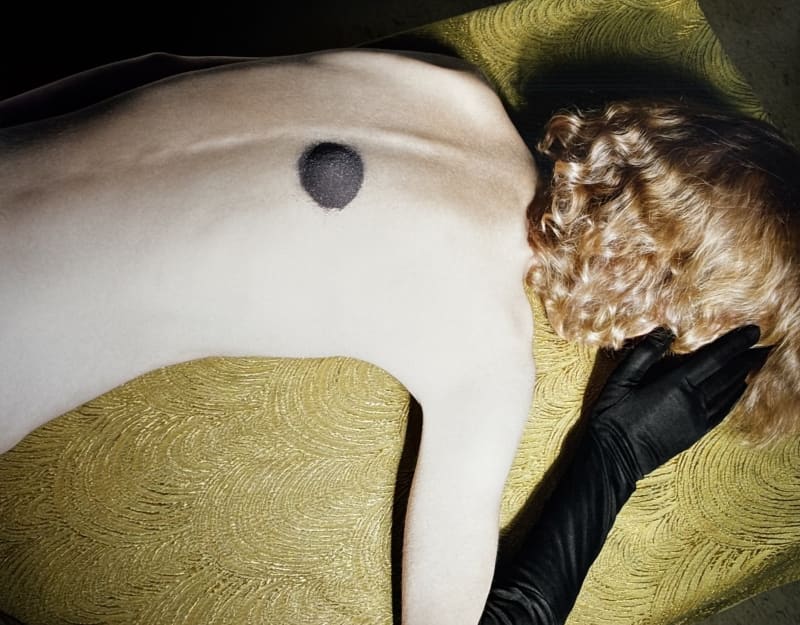Jo Ann Callis was born in Ohio in 1940 and moved to Los Angeles in 1961. At the age of 23, she was already married and the mother of two children. After her divorce, she began studying art at UCLA, where she studied with Robert Heinecken and was introduced to color photography. Inspired by Paul Outerbridge, she soon developed her own distinctive visual language, combining staging, emotionality, and subtle provocation.
Her early works were created during a period of personal uncertainty following her divorce, reflecting existential fears, sexual self-questioning, and the search for identity. She experimented with androgyny and asked questions such as: What is feminine? What is masculine? What defines us as human beings? Her works were bold, often different from the dominant conceptual, emotionally detached art of the time – and at first, she hesitated to show them.
Over the years, Callis refined her visual language. Her photographs oscillate between intimacy and distance, between beauty and unease. She often leads viewers to the edge of social taboos without providing clear answers. This tension keeps her work timelessly relevant.
As a woman and artist, she moves between vulnerability and strength, between desire and fear, between social attributions and individual freedom. Her art raises questions about the image of women, about sexuality, identity, and power relations – never simplistic, but multilayered, ambivalent, and full of poetic intensity.
Since the 1970s, Callis has been an established figure in the American art scene. In addition to photography, she also works with painting and sculpture. Her works have been exhibited internationally, including at MoMA, LACMA, and the Getty Museum, which dedicated a retrospective to her in 2009. For her work, she has received several NEA Fellowships and a Guggenheim Fellowship.
